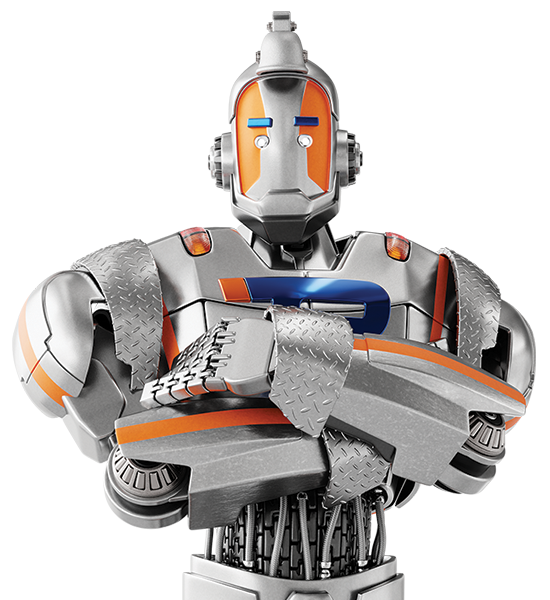Understanding Safety Chain Regulations
in Australia and New Zealand
Here at Trailparts, we know that the government regulations around towing and safety chain requirements can be difficult to understand. At the end of the day, all most people want to know is:
- What chains and connections to fit to your trailer.
- How to fit them.
- How to use them.
Regulations between NZ and Australia do differ, so be sure to read the relevant information below. If you’re planning on selling your trailers across the ditch, your trailers will be legally required to meet the safety standards for the country in which they will be used.
It’s our job to know the ins and outs of safe towing, and in this guide, we’ve picked out the important towing regulations, so you have clear information on what safety connections to use on your trailer for safe, compliant towing.
Safety Chain Regulations in Australia
Safety Chain Regulations in New Zealand
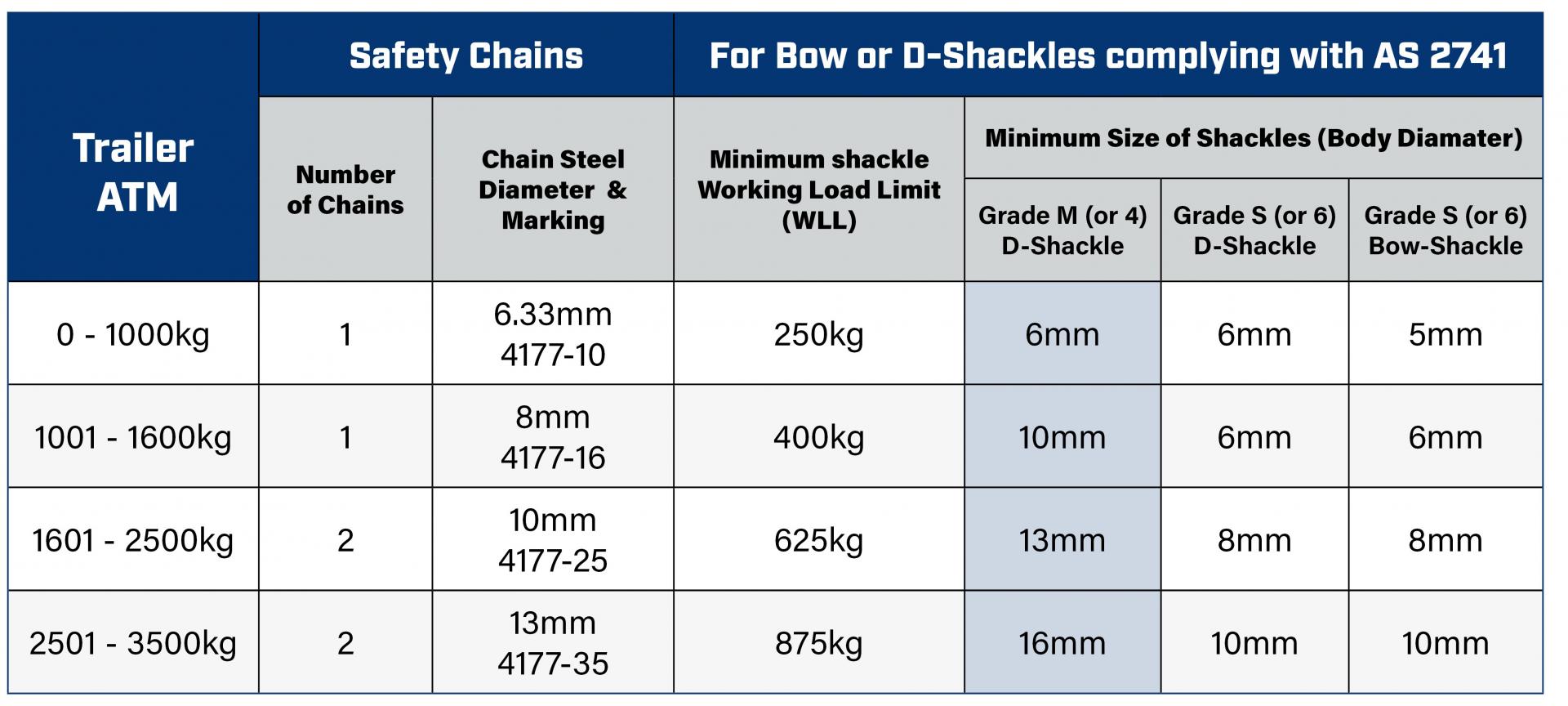
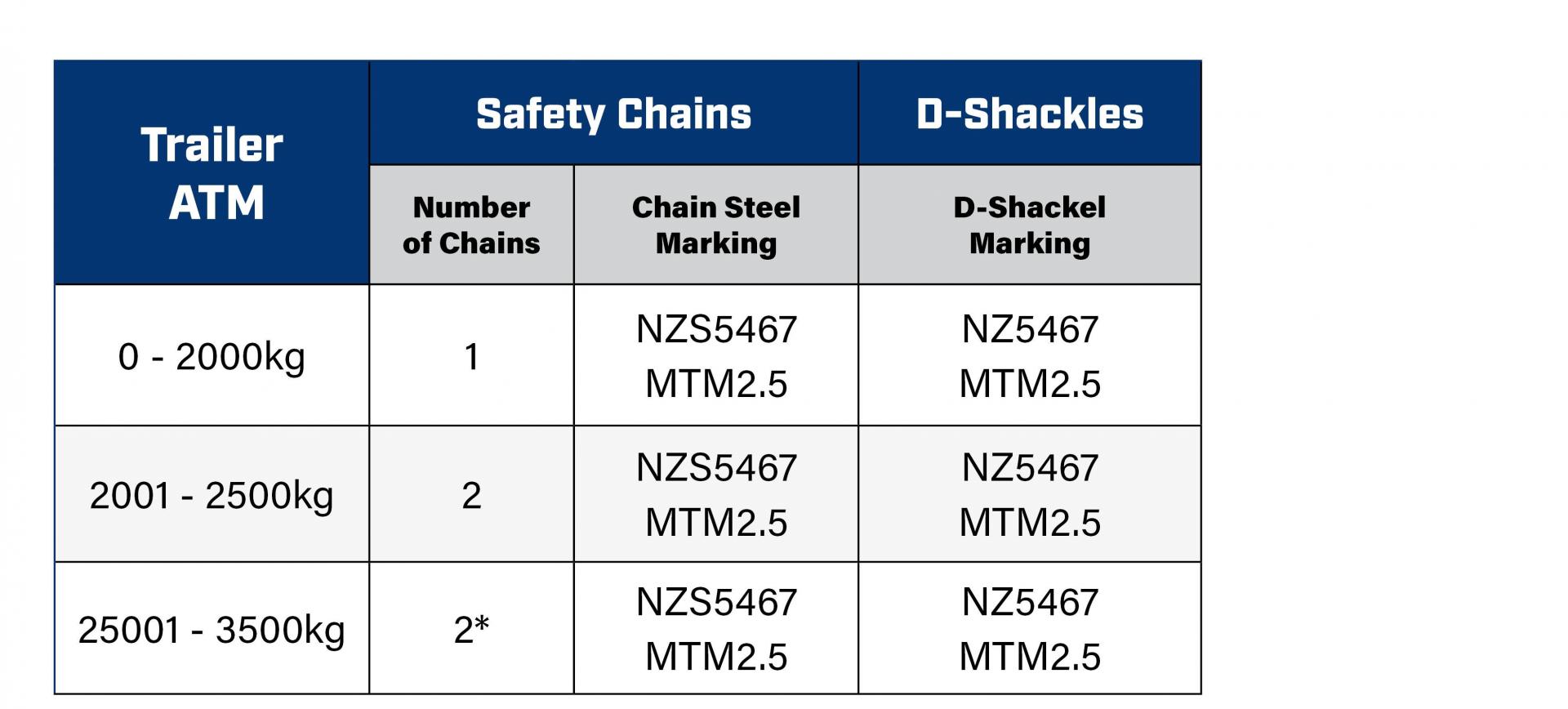
* For 2,501-3,500kg trailers, a breakaway system is the preferred method
of safety mechanism. However, 2 x chains are a legally acceptable option.
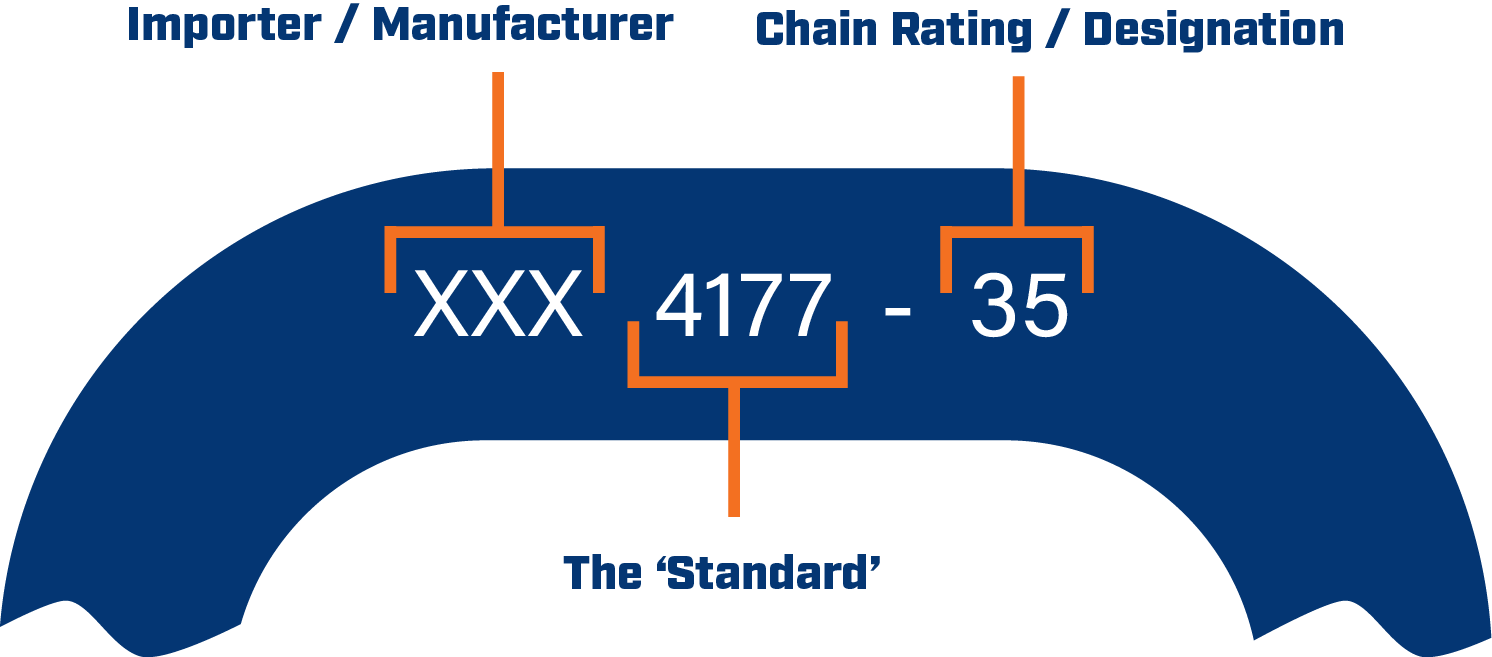
Stamping Requirements
Chain must be stamped with the appropriate 4177 rating as displayed, and the Manufacturers’ ID number.
Stamping
NZ regulations specify that chains and shackles must be stamped with NZS 5467 and MTM2.5.
CTA / ROVER
Chains and connectors are required to have a CTA (Component Type Approval) number on the ROVER system. Be aware of cheaper, unapproved products without CTA numbers – they’re likely to cause more headaches than they’re worth.
Connections
All bolts, connections, shackles, and chains must meet the above ratings – and remember, a connection is only as strong as its weakest point.
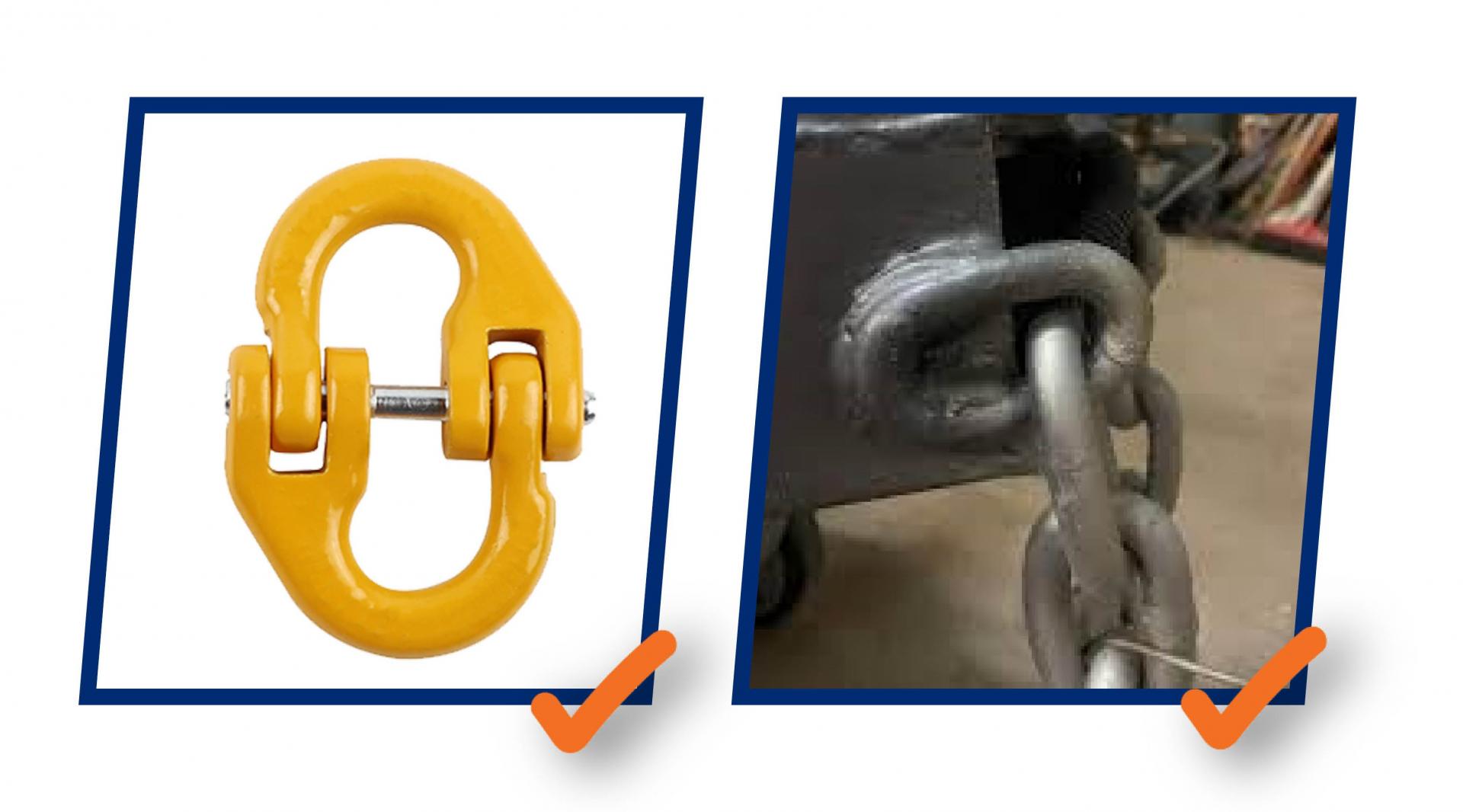
Attaching Chains to the Drawbar / A-Frame
Chains must be permanently fixed to the drawbar by one of the following methods:
- Welding: Welding is permitted by Australian regulations. The weld must cover at least 50% of the link, and the next link must be able to move freely.
- Shackles: Shackles, including hammerlocks, that meet the above standards can be used to fix the chain to the drawbar.
The safety chain attachment point(s) should be as close to the coupling as possible. If you are using two chains, they should be mounted one per side of the centreline of the drawbar.
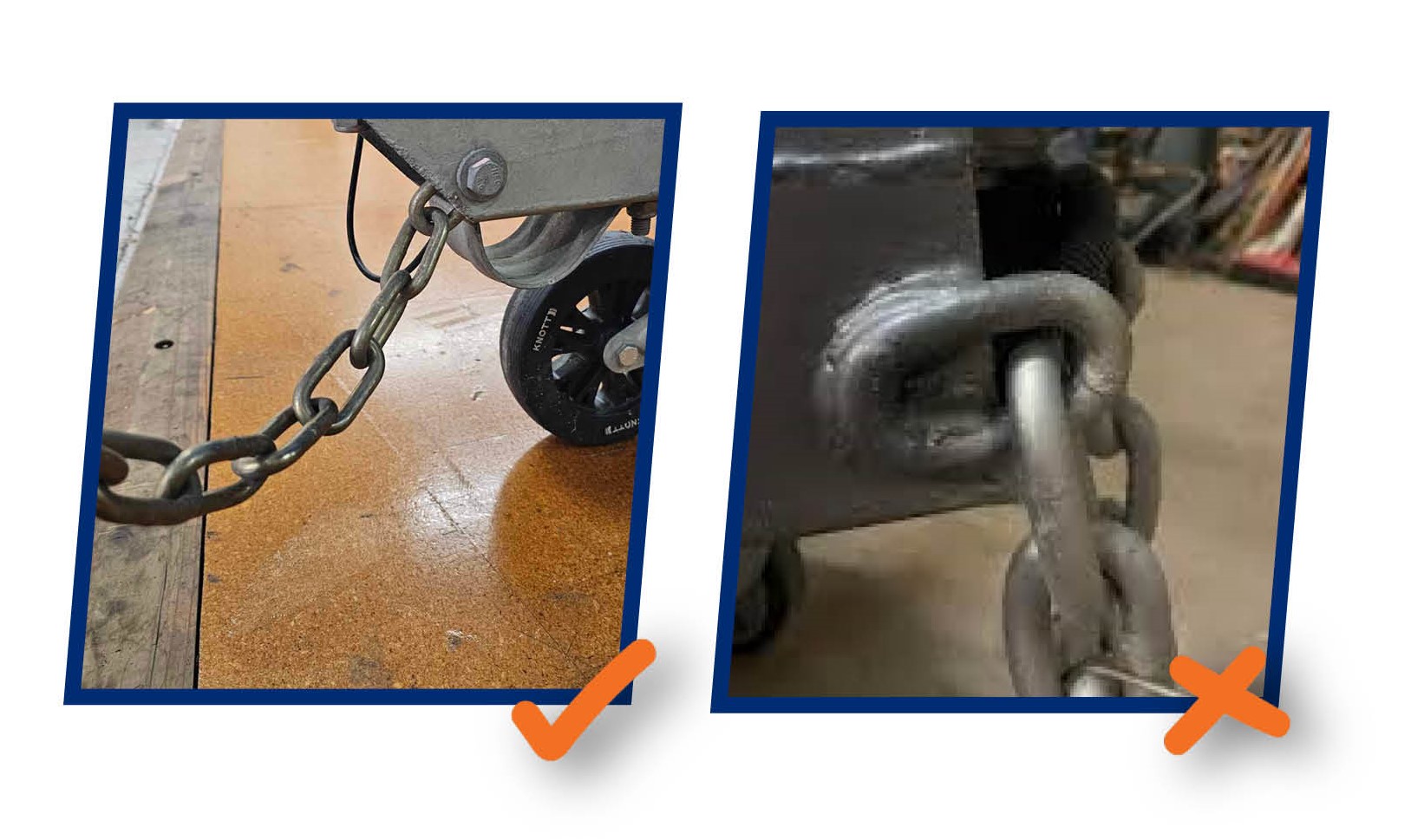
Attaching Chains to the Drawbar / A-Frame
Mechanical fixtures are acceptable to connect your safety chain. The use of a high-tensile bolt and a chain with a mounting washer is ideal.
Mount holes drilled in the drawbar should be at least ½ of the length of 1 chain link from the outside edge. Mounting must be separate from the coupling and the coupling mount bolts.
Welding chains is not acceptable under NZ regulations – regardless of what you see on some cheap imports.
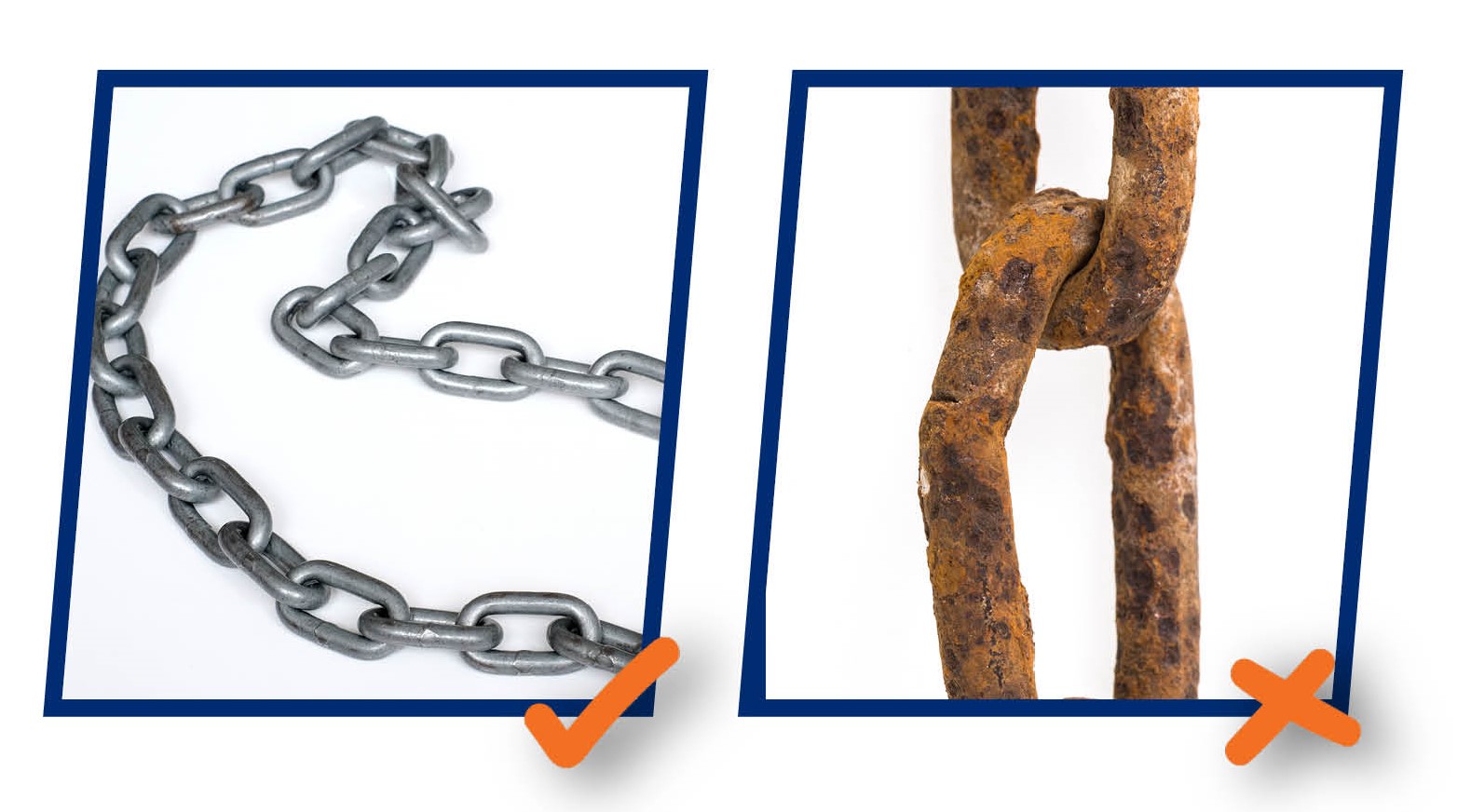
Chain Wear
Inspect your chains regularly for wear or fatigue. If any links are deformed or damaged, we recommend replacing the chain.
Crossing Chains
While crossed chains is not a legal requirement for safe towing in Australia, it is recommended as this method can help reduce the damage to the coupling in the event of a detachment.
Note: Do not twist the chains.
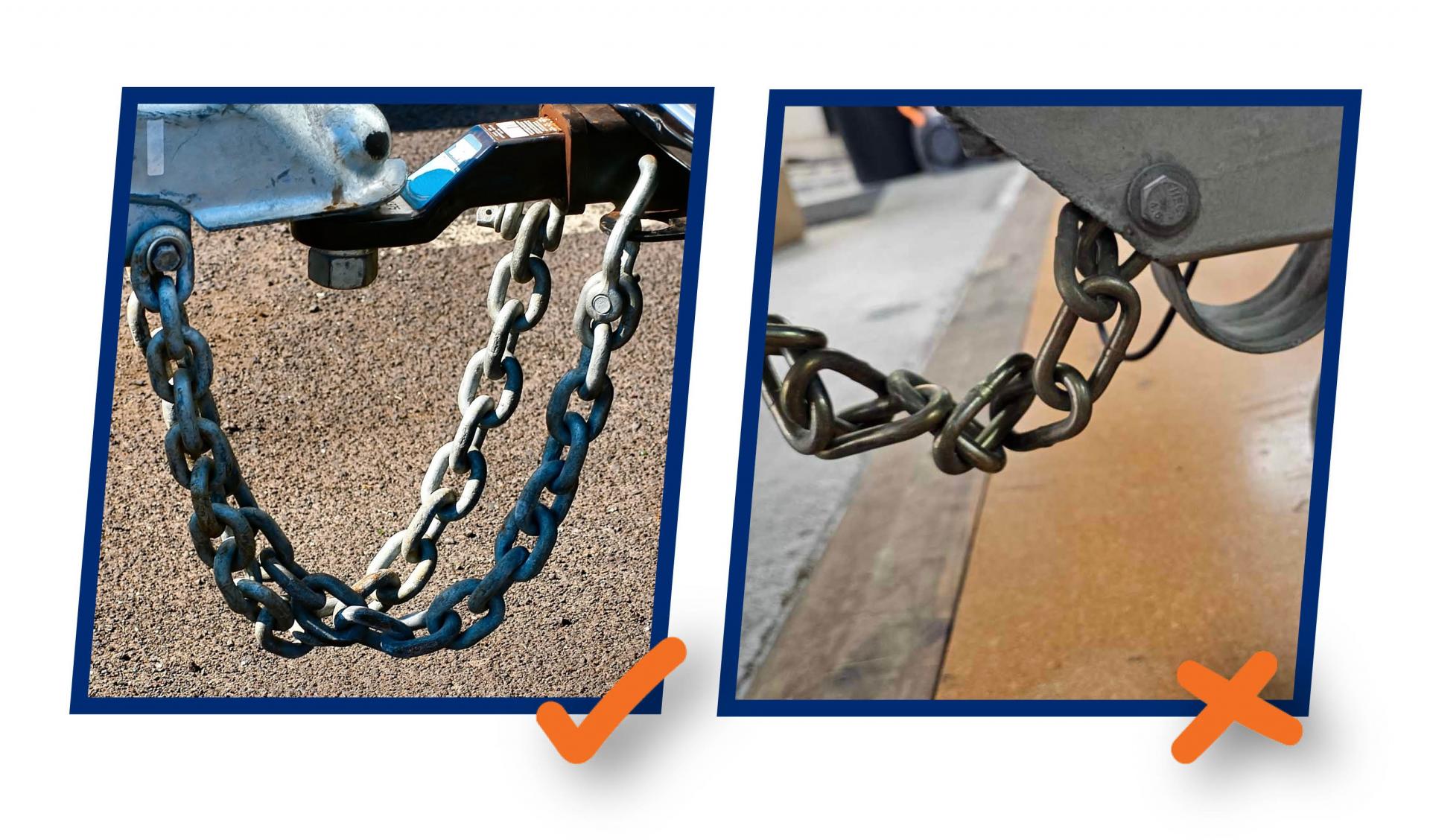
Crossing Chains
Crossing chains is required in New Zealand.
Note: Do not twist the chains
Chain Wear
Inspect your chains regularly for wear or fatigue. If any links are deformed or damaged, we recommend replacing the chain.
Chain Length
When attaching a chain, determine the ideal length: the chain shouldn’t drag on the road, and it should not become tight when cornering or articulating.
Trailers over 3500kg ATM
Trailers in this class will usually have a breakaway, rather than chains. However, if you choose to use chains, there are specific guidelines:
When towing over 3500kg ATM, chains must be made from steel with a minimum 800 MPa breaking stress and adhere to AS2321 specifications. Welding to the drawbar and shackles is not permitted by Australian regulations in this class, and a sufficiently rated safety chain attachment point must be used.
Trailers over 3500kg ATM
Trailers in this class require a breakaway system in NZ.
For more information on over-ride brake systems approved to UN/ECE R13 read up on our 3500kg brake systems blog here.
It’s crucial for anyone towing trailers and caravans in either NZ or Australia to be aware of these regulations to ensure safe and compliant towing practices on the road.
Get in touch with the team at Trailparts for an explanation from the experts on chain and coupling requirements in your region.
P: 0800 487 245
Email: sales@trailparts.co.nz
